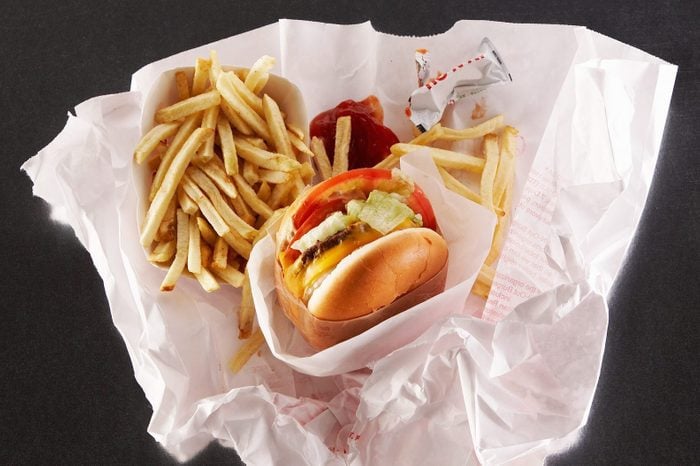
The truth about healthy fats
Starting in the 1970s and continuing throughout the 1990s, health experts recommended that most people eat a low-fat diet. Why? Researchers had discovered a strong link between dietary saturated fats and heart disease. But as people began to adopt new low-fat diets and eat more low-fat foods, there were major negative consequences that people had failed to consider.
Fat gives flavour to food and helps you feel more satisfied and full for longer. So when people started eating mostly low-fat foods, some people started eating more total calories than before in order to feel full. Many food manufacturers also switched out fat from packaged foods and replaced them with sugar and refined carbohydrates, which are chock-full of extra calories without a lot of nutritional value.
Research shows that replacing fats with simple carbohydrates like refined grains and added sugars does not reduce the risk of heart disease. And foods rich in sugars can raise circulating levels of triglycerides, or blood fats. High triglyceride levels can lead to type 2 diabetes, fatty liver disease, and heart failure.
These days, experts understand that it’s less about how much fat you eat and more about what type. While unhealthy fats can cause high cholesterol and heart disease, healthy fats boost heart health.
Here’s what the experts want you to know about healthy fats, including what they are, where to find them, and why they’re so important for healthy cholesterol levels and overall good health.
(Related: 45 Incredible Dessert Recipes You Won’t Believe Are Healthy)
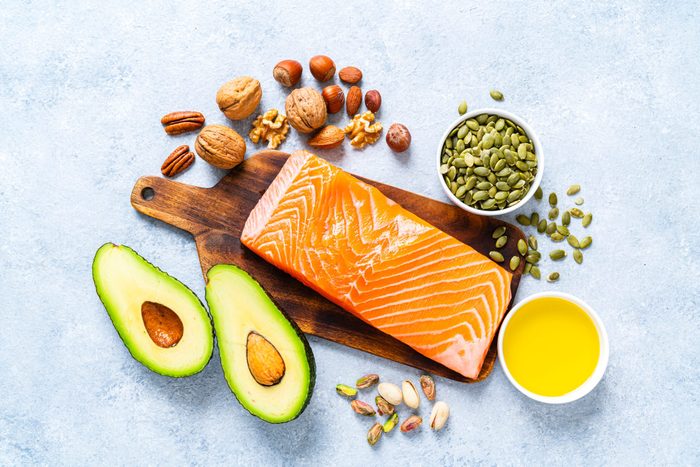
The body needs fat
Nutrients in fat play a role in several important bodily processes. But the body does not produce fats, also known as fatty acids, so they must be consumed in foods. Fats are an excellent source of calories that the body can convert into energy. Many dietary forms of fat contain twice the calories per gram as carbohydrate and protein.
Internal body fat also protects organs and helps keep us warm. Babies and toddlers in particular need fat to fuel healthy cognitive development and growth. Fats also allow the body to absorb and use essential vitamins, such as A, E, D, and K, says registered dietitian Roxana Ehsani, a spokesperson for the Academy of Nutrition and Dietetics. Plus, she says, fat helps cells grow, helps the body make hormones, and promotes satiety, which keeps you full for longer.
Beyond that, experts say fat also gives food rich flavour and can amp up the flavour on otherwise bland or boring health food, like certain veggies.
(Related: How the Pandemic Helped Me Embrace Weight Gain and Intuitive Eating)
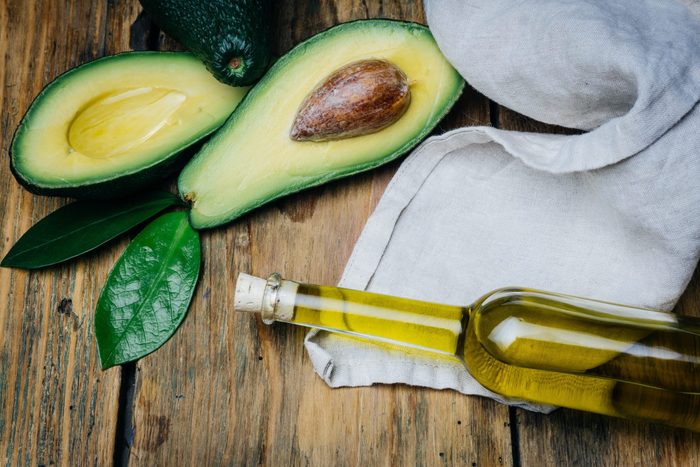
The four types of fat
Different types of fat have different chemical structures that determine how the body uses them and how healthy they are. There are four main types of fat found in human foods, each of which has different physical and chemical characteristics:
- Saturated fat
- Trans fat
- Monounsaturated fat
- Polyunsaturated fat
Of the four types of fats, two are classified as unhealthy, and two are classified as healthy. It’s important to note that all dietary fats contain a mix of the main types of fat; some just contain higher or lower levels of certain types.
(Related: 37 Secrets Nutritionists Won’t Tell You for Free)
Which are unhealthy fats?
There are two primary types of unhealthy fat, most of which are found in animal products or packaged or prepared foods: saturated fats and trans fats.
(Related: High-Fat Foods You Should Be Eating)
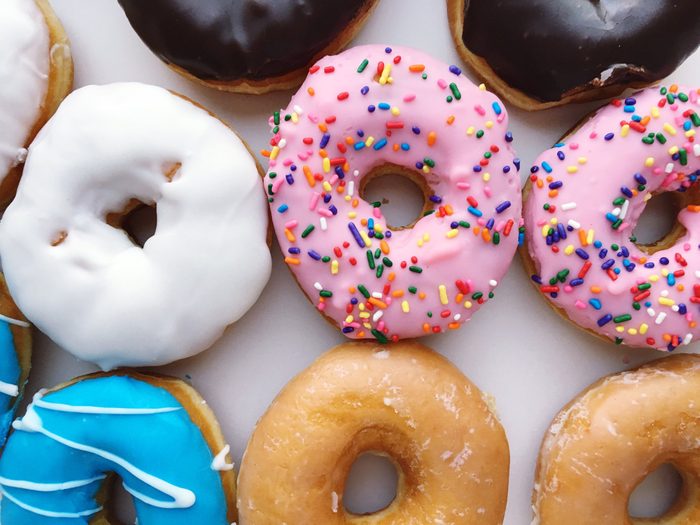
Saturated fats
Saturated fats are so full of hydrogen molecules that they lack double bonds between their carbon molecules. This chemical makeup allows saturated fats to melt at warmer temperatures, stay solid at room temperature, and firm up or freeze at lower temperatures.
(Related: The 10 Healthiest Cooking Oils, According to Food Experts)
Sources of saturated fat
A lot of animal products contain saturated fat, such as:
- Fatty beef and beef fat (tallow)
- Pork
- Poultry with the skin still on
- Butter and lard
- Cream and most dairy products made from whole or reduced-fat (2 percent) milk
- Cheese
- Many baked goods, prepared foods, frozen foods, and fried foods
- Palm oil
- Coconut oil
- Palm kernel oil
(Related: Prevent High Cholesterol By Eating More Of These Fruits and Veggies)
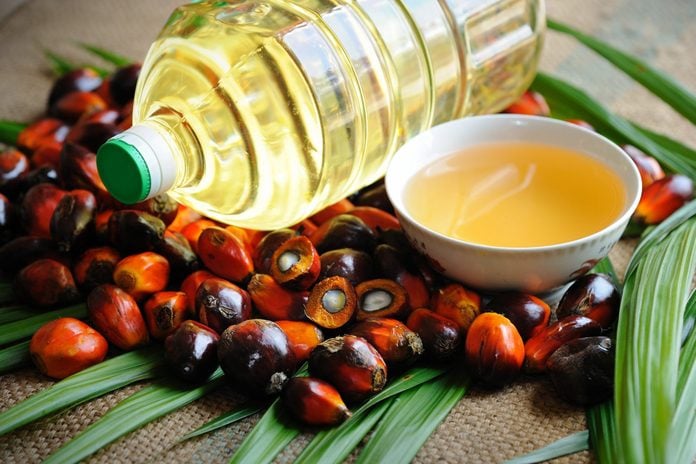
Trans fats
There are two types of trans fats: natural and artificial. Naturally occurring trans fats are made in the stomach of some animals, and beef, butterfat, and lamb all contain a small amount of natural trans fat.
Artificial trans fat is made in a factory by saturating liquid vegetable oils with hydrogen to make them more solid at room temperature. Hence the name you might spot in the ingredient list of foods with trans fat: partially hydrogenated oil.
(Related: 50 Surprisingly Unhealthy Foods at the Grocery Store)
Is trans fat safe?
Food manufactures use trans fats because they are cheap, have a desirable texture and taste, and last a long time before spoiling. But in 2018, Health Canada banned the use of partially hydrogenated oils in foods. And as of September 2020, food manufactures can no longer legally add partially hydrogenated oils to foods sold in Canada.
That is because there is clear evidence that eating trans fats raises bad LDL cholesterol levels and lowers levels of high-density lipoprotein (HDL). This so-called “good” cholesterol helps remove LDL from the bloodstream, sending the unhealthy particles to the liver to be processed and flushed from the body.
Trans fat is one of the worst foods for your cholesterol, and research shows that consuming trans fats raises the risk of stroke, heart disease, and type 2 diabetes.
(Related: Can the Coronavirus Increase Your Risk of a Stroke?)
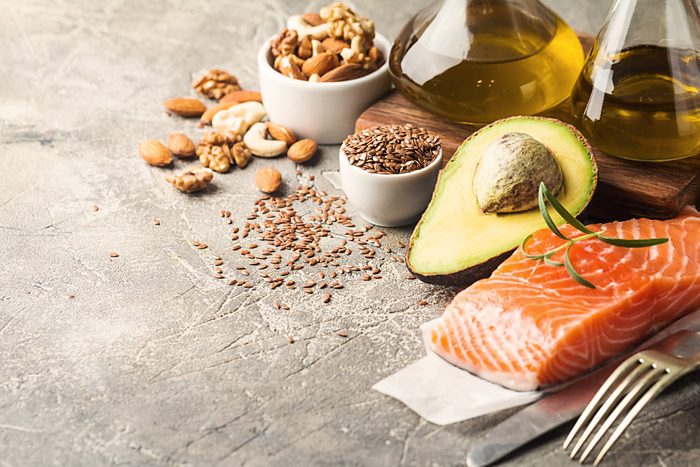
What are healthy fats?
“There are two types of unsaturated fats: monounsaturated and polyunsaturated fat. Both of these are the good, or healthy, fats,” says Ehsani. Both types of fat are considered healthy primarily because they help remove cholesterol from the bloodstream.
(Related: 5 Natural Ways to Lower Your Cholesterol)

Monounsaturated fats
Fat molecules with one carbon bond that is not saturated are called monounsaturated fats. Because they’re not saturated, these fats can bond to blood cholesterol and remove it from circulation.
Monounsaturated fats are typically liquid at room temperature and are most commonly found in vegetable oils, nuts, and seeds. Most animal fats also contain monounsaturated fats, and you can find it in wild game, beef, pork, and chicken. (More on healthy fat foods later.)
(Related: Canola Oil vs. Vegetable Oil: Which is Healthier?)
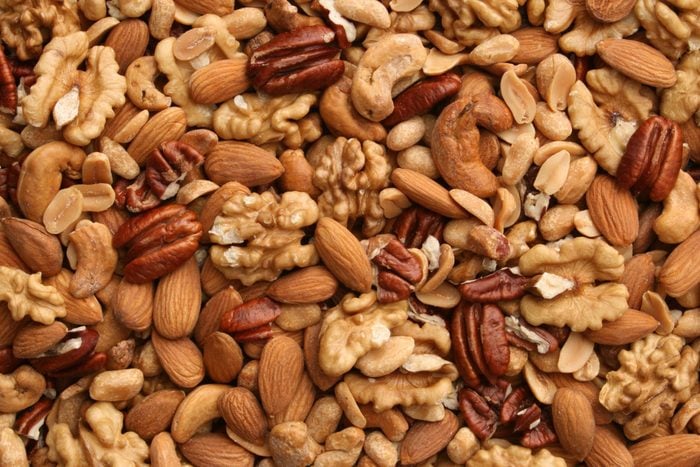
Polyunsaturated fats
Fat molecules with more than one carbon bond that is not saturated by hydrogen are considered polyunsaturated. Because they aren’t saturated, polyunsaturated fat molecules can bind to multiple molecules of cholesterol and remove them from the bloodstream.
Like monounsaturated fats, polyunsaturated fats are found in a lot of vegetable oils, nuts, and seeds. Many animal fats also contain small amounts of polyunsaturated fat.
(Related: The Best Sources of Plant-Based Protein)
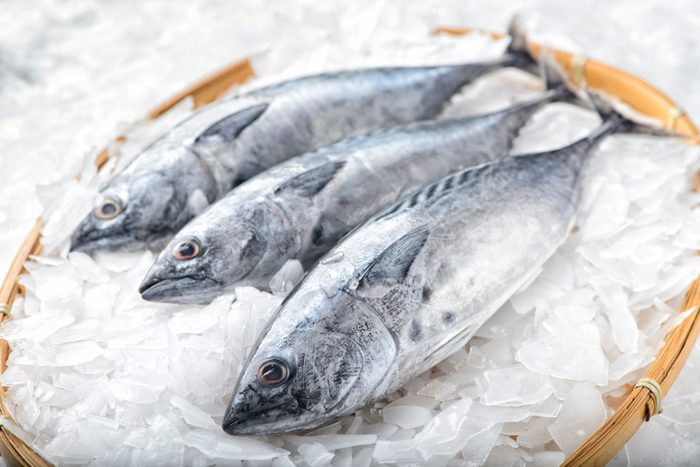
Omega-3 fatty acids
There are three main types of omega-3 fatty acids found in polyunsaturated fat: eicosapentaenoic acid (EPA), docosahexaenoic acid (DHA), and alpha-linolenic acid (ALA).
Omega-3 fatty acids help form and maintain membranes that surround every cell in the body. These polyunsaturated fatty acids are also crucial to several important processes in the blood vessels, lungs, heart, immune system, and endocrine system (hormone-producing glands).
Most plant oils contain ALA, including flaxseed, soybean, and canola oils. Many nuts and seed also contain ALA.
Fatty types of cold-water fish are rich in omega-3s and contain DHA and EPA. They include:
- Tuna
- Salmon
- Herring
- Mackerel
- Sardines
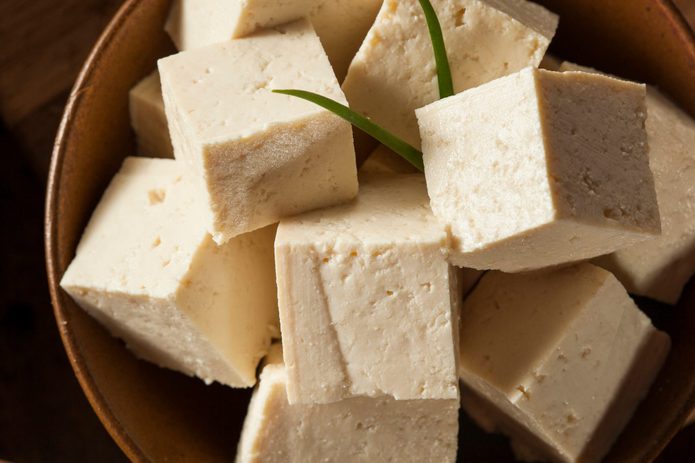
Omega-6 fatty acids
There are two major types of omega-6 fatty acids, another type of polyunsaturated fat: linoleic acid and arachidonic acid. These fatty acids play a powerful role in mediating bodily processes such as blood vessel constriction, inflammation, and blood clotting.
Some healthy foods rich in omega-6 fatty acids include:
- Soybeans and tofu
- Walnuts
- Peanut butter
Most people actually eat too much omega-6 and not enough omega-3. That is because many popular foods, like snack foods, fatty meats, cured meats, fast foods, and desserts, contain high levels of omega-6s.
(Related: Is Vegetarian Fast Food Actually Healthy? Here’s What to Know)

What health benefits do healthy fats provide?
“Healthy fats are considered cardio-protective, meaning that they actually work to preserve your cardiac function and system. These healthy fats can lower ‘bad’ LDL cholesterol and raise ‘good’ HDL,” says Jen Bruning, RDN, a spokesperson for the Academy of Nutrition and Dietetics.
According to a 2017 review of data, most available studies show that replacing saturated fats in the diet with healthy fats reduces the risk of coronary heart disease, dying from a heart event, and the overall risk of dying.
In a 2020 study, replacing saturated fats with unsaturated fats from vegetables oils and walnuts also reduced participants’ level of total cholesterol without increasing unhealthy lipoproteins.
Healthy fats also contain vitamin E. “[Healthy fats] also serve as anti-inflammatories all over the body,” Bruning says. “This can protect cells in the brain and other vital organs from oxidative damage.”
Some research shows that replacing simple carbohydrates with unsaturated fats can improve blood cholesterol levels, leading to higher HDL levels and lower LDL levels.
(Related: 7 Supplements Heart Doctors Take Every Day)
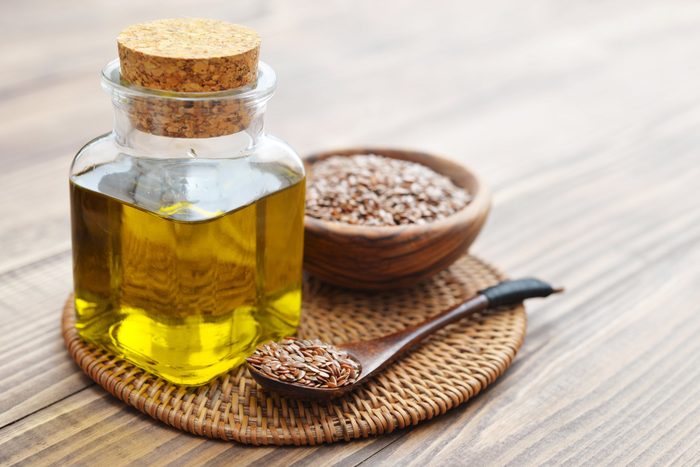
List of healthy fats
Lots of healthy foods are rich in healthy fats, whether monounsaturated or polyunsaturated. Here’s where to find each:
Foods with monounsaturated fats:
- Olive oil
- Canola oil
- Safflower oil
- Sesame oil
- Sunflower oil
- Peanuts
- Olives
- Avocados
- Most nuts and seeds
- Foods with polyunsaturated fats:
- Soybean oil
- Sunflower oil
- Cottonseed oil
- Corn oil
- Soybeans and tofu Most nuts, especially walnuts and pine nuts
- Most seeds, especially pumpkin, flax, and sesame seeds
(Related: What You Need to Know About the Mind-Gut Connection)
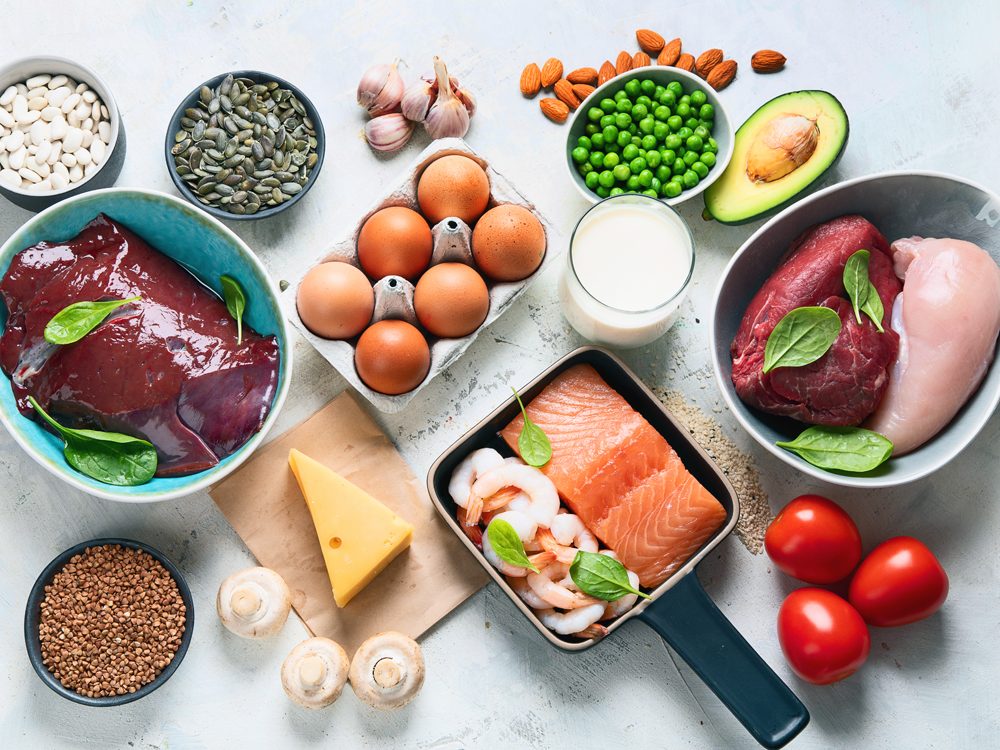
How much fat should you eat daily?
There is no set guideline on how much fat you should get each day. But keep in mind that while unsaturated fats are much healthier overall than saturated and trans fats, all fats contain around 9 calories per gram, according to Statistics Canada. That’s more than protein and carbohydrates, which each have 4 calories per gram.
Adults 19 years of age and older should not get more than 20 to 35 percent of their daily caloric intake from fats, according to information from the National Institutes of Health (NIH). Children ages 4 to 18 should not get more than 25 to 35 percent of their daily caloric intake from fats.
As for how much of each fat type to get, the National Institute on Aging says saturated fats should not account for more than 10 percent of an adult’s daily caloric intake. It also recommends eating as little trans fat as possible.
“Trans fat should be avoided completely, as it not only raises the bad LDL cholesterol but also lowers the good HDL cholesterol,” says Ehsani.
The American Heart Association advises adults to aim for a diet where only 5 to 6 percent of their daily calories come from saturated fat. For people who get around 2,000 calories per day, that would translate to no more than 13 grams of saturated fat daily.
(Related: 10 “Zero-Calorie” Foods That Aren’t Really Zero Calories)
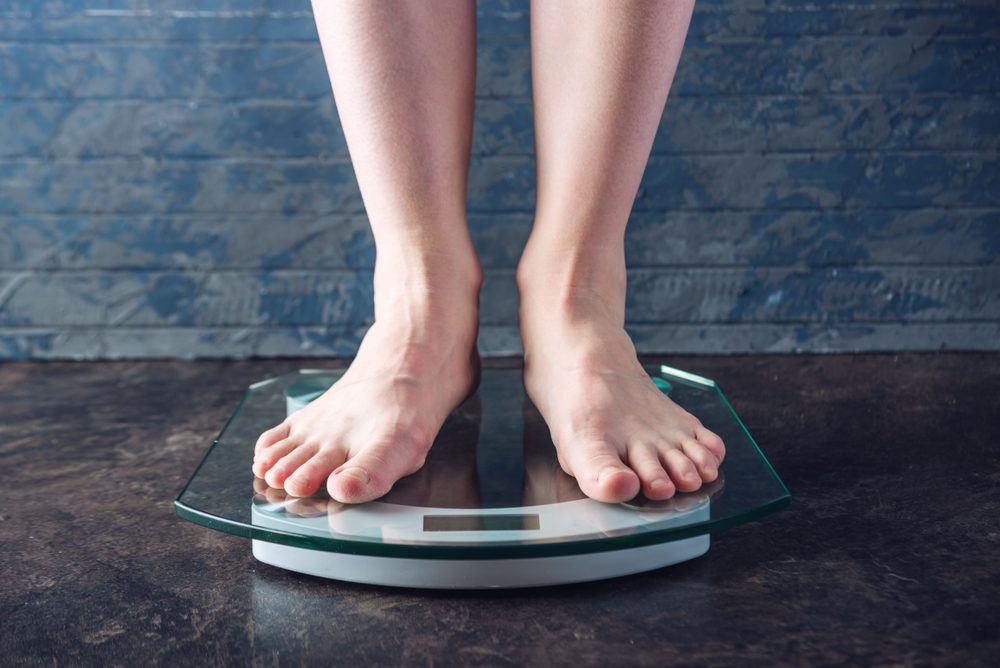
Low-fat vs. healthy fats: Which is healthier?
In a major government-funded study called the Pounds Lost trial, people trying to lose weight who ate lower-fat diets or higher-fat diets experienced similar amounts of weight loss, and both were able to keep the excess weight off.
“In general, most people should try to substitute healthy fats for unhealthy fats,” says Tricia L. Psota, PhD, RDN, managing director of the nutrition consulting company Nutrition on Demand. “However, there are some individuals, such as those with certain lipid and metabolic disorders, who may benefit from following a dietary pattern lower in total fat.”
So for many people, eating healthy fats instead of unhealthy ones is more important than sticking to a low-fat diet.
Dr. Burning says it’s important to keep in mind that consuming excess fat from any source can cause weight gain, so balancing fat with protein and complex carbohydrates is a good idea. She recommends consulting a registered dietitian to help figure out how to balance nutrients by eating foods you already love.
(Related: 12 Things a Body Image Coach Wishes You Knew)

How to replace unhealthy fats with healthy fats
There are many ways to help reduce your saturated fat intake and boost your healthy fat intake. “Some healthy fat substitutions include using avocado instead of mayo as a sandwich spread and cooking in vegetable oil instead of butter,” says Psota.
Ehsani suggests ditching low-fat salad dressings or veggie dips for homemade alternatives with healthy oils. She says she always recommends eating healthy fats with meals because it makes sure you don’t miss out on absorbing vital fat-soluble vitamins.

More top tips from the experts and major health authorities:
- Choose lean cuts of meat. Trim excess meat fat, and remove the skin from chicken.
- Choose nontropical vegetable oils for cooking, including olive, canola, corn, and sunflower oils. Limit tropical oils like palm and coconut oils.
- Choose low-fat or fat-free dairy products instead of full-fat or heavy dairy products like cream, ice cream, milk, kefir, and yogurt.
- Avoid processed foods that often contain saturated and trans fats, such as baked goods, chocolates, desserts, packaged dinners, chips, and frozen pizzas.
- Read nutrition labels whenever they’re available and pick products that are free of trans fat and low in saturated fat.
- Replace snack foods and processed foods with fresh fruits and vegetables and whole grains.
- Limit butter and margarine intake by not adding extra butter to breads or cooking meats, eggs, and vegetables in butter. When you’re looking to add fat, use healthy fats instead, such as cooking veggies in olive oil.
- Replace oil-based binders in recipes with applesauce or egg whites.
- Broil, grill, or bake instead of frying foods.
- Choose cooking oils with less than four grams of saturated fat per tablespoon.
